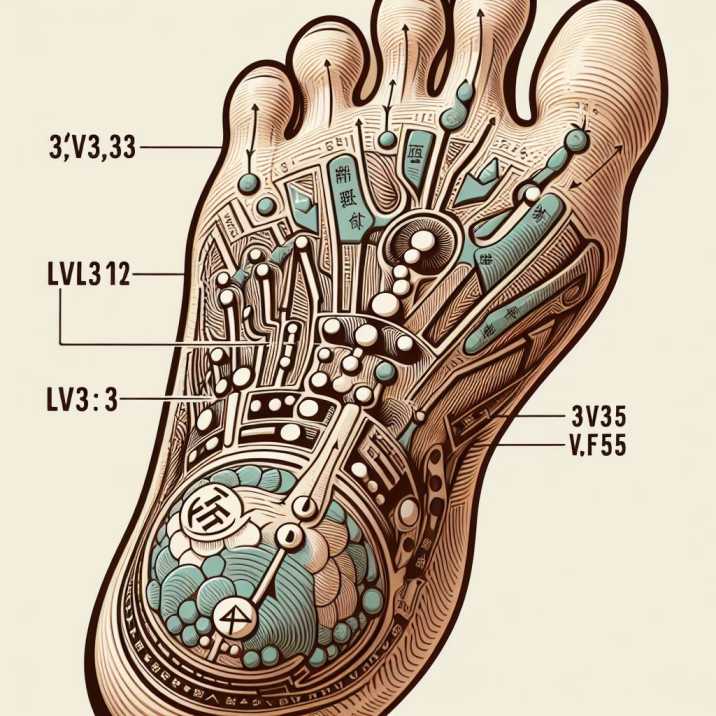Introduction:
Table of Contents
In the realm of martial arts, Kung Fu isn’t just about mastering physical techniques; it’s also deeply intertwined with the principles of traditional Chinese medicine (TCM). Central to TCM is the concept of Kung Fu acupressure points, believed to be channels of energy that run through the body. By applying pressure to these points, practitioners aim to promote self-healing and enhance overall well-being. In this article, we’ll delve into some famous Kung Fu acupressure points renowned for their healing properties and explore how they can benefit your health.
The Power of Acupressure Points:
Acupressure points are specific points on the body where the flow of Qi (pronounced “chee”), or vital energy, can be manipulated to restore balance and alleviate various ailments. In Kung Fu, the knowledge of these points is crucial not only for combat but also for promoting self-healing and maintaining health.
Famous Kung Fu Acupressure Points:
Tai Chong (LV3):
Located on the top of the foot between the big toe and the second toe, this point is known for its ability to relieve stress, reduce headaches, and improve digestion.

He Gu (LI4):
Found in the webbing between the thumb and index finger, He Gu is renowned for its analgesic properties and is often used to alleviate pain, headaches, and sinus congestion.
Zu San Li (ST36):
Situated below the kneecap, about four finger widths down, Zu San Li is believed to boost the immune system, improve digestion, and increase energy levels.
Qu Chi (LI11):
Located at the outer end of the elbow crease, Qu Chi is commonly used to alleviate pain and stiffness in the arm, elbow, and shoulder. It’s also believed to support the immune system and promote detoxification.
Hegu (LI4):
Situated on the back of the hand, between the thumb and index finger, Hegu is renowned for its ability to relieve pain, especially headaches, toothaches, and neck pain.
Benefits of Kung Fu Acupressure Points:
The application of pressure to these Kung Fu acupressure points offers a myriad of benefits, including:
- Pain relief
- Stress reduction
- Improved circulation
- Enhanced immune function
- Better digestion
- Increased energy levels
How to Activate Kung Fu Acupressure Points:
Activating Kung Fu acupressure points is simple and can be done with gentle pressure using your fingers or specialized tools. Begin by locating the desired point and apply steady pressure for 30 seconds to 2 minutes, focusing on deep breathing and relaxation.

Table of Information:
| Acupressure Point | Location | Benefits |
|---|---|---|
| Tai Chong (LV3) | Top of the foot | Stress relief, headache relief, improved digestion |
| He Gu (LI4) | Thumb and index finger | Pain relief, headache relief, sinus congestion |
| Zu San Li (ST36) | Below the kneecap | Immune support, digestion improvement, energy boost |
| Qu Chi (LI11) | Outer end of elbow | Pain relief, immune support, detoxification |
| Hegu (LI4) | Back of the hand | Pain relief, headache relief, neck pain relief |
Conclusion:
Incorporating the knowledge of Kung Fu acupressure points into your self-care routine can be a powerful tool for promoting overall health and well-being. By harnessing the ancient wisdom of traditional Chinese medicine, you can unlock the potential for self-healing and embark on a journey towards a healthier, more balanced life.
FAQs:
- Q: Can anyone practice Kung Fu acupressure? A: Yes, Kung Fu acupressure techniques can be practiced by anyone with proper guidance and instruction.
- Q: How often should I stimulate acupressure points? A: It’s recommended to stimulate acupressure points daily for optimal benefits, but listen to your body and adjust as needed.
- Q: Are there any risks associated with acupressure? A: When done correctly, acupressure is generally safe. However, avoid applying excessive pressure or stimulating points during pregnancy without consulting a healthcare professional.
- Q: Can acupressure replace medical treatment? A: While acupressure can complement conventional medical treatment, it’s not a substitute for professional medical care. Always consult with a healthcare provider for any serious health concerns.
- Q: How long does it take to experience the benefits of acupressure? A: The effects of acupressure can vary from person to person. Some may experience immediate relief, while others may require regular practice over time to notice significant improvements.


